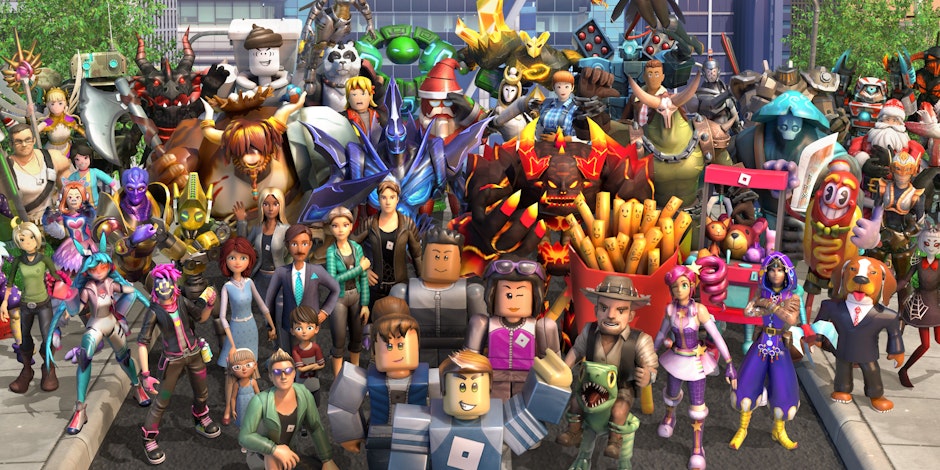‘Most social ecosystem on the planet’: Roblox’s new generation of makers and buyers
This week, The Drum’s Digital Transformation Festival brings together industry leaders to put digital trends under the microscope. In one panel, we sat down with three experts in gaming and youth audiences to investigate whether video game platform Roblox contains within it the seeds of a brave new world of community-based marketing – or if the hype is just that... hype.

With an explosion of column-inch popularity in the last couple of years, marketers would be forgiven for thinking that Roblox is a new game. But it isn’t new, and it isn’t really a game.
It was first released back in 2006 and is more of a game-making and -hosting platform than a game itself. Log in for the first time and you won’t be spat out into an open world like Minecraft (its closest relative), but something that looks like an app store. On the store: ‘experiences’ to buy or try, millions of them, all with their own look, feel and rules.
Often the creators of these experiences are from the same demographic as Roblox’s userbase: children, and mostly young ones – about a quarter of users are under nine, and another quarter are between nine and 12 (that makes most of them ‘generation alpha,’ with some older generation Zers). For those kids, says Kairos Group’s chief exec (and former professional gamer) Mike Craddock, Roblox isn’t a game so much as an “avatar-friendly minigame development lifestyle.”
Community, creativity and commerce: the world in microcosm
We’ve heard a lot about the blurring of the boundaries between home and work over the last couple of years. Turns out kids have been hit by that trend too, and Roblox is the melting pot. Following early entrepreneurial incubators such as Habbo Hotel and RuneScape, users are mixing work and play by selling experiences, trading digital assets and even getting paid directly by Roblox for development, to the tune of a collective $250m.
Make no mistake: Roblox introduces community, creativity and commerce as a package deal. “It’s not a passive experience, where you’re just flipping through YouTube or TikTok videos,” says Current Forward’s Ashley Lapin. “It enhances the ability to socialize; to express creativity.”
Young players are “learning how to negotiate trades with people, buying, selling, maximizing time and maximizing return on investments,” adds Craddock. “It’s enhancing from an educational perspective, but they’re enjoying it as well. And that’s how, fundamentally, the younger generation consume information: by enjoying something.”
You could see Roblox as a little diorama of the world as a whole, with kids playing most of the parts – a community, in other words. As VMLY&R’s Jeff Danley sums it up, “gaming has really evolved into what’s probably the most social ecosystem on the planet. Many brands don’t recognize it as social, but in platforms such as Roblox and Minecraft, and to some extent even Fortnite, we’re bringing people together in shared social experiences.”
The next level: any-which-way communication
Collaborative, co-creating communities might in some ways be seen as the culmination of a dream that the marketing industry didn’t realize it had. Lapin says: “Look at the promise of social media; that it wouldn’t just be one-way communication, but it would be two-way. Places like Roblox kick that up to the next level, where you can engage and create alongside the people who love your brand.” To coin a phrase, perhaps we’re entering the era of any-which-way communication.
What makes Roblox exciting in this regard is precisely that it’s not a game. Danley says: “For brands that are interested in the gaming space, it can be challenging to find just the right game that aligns with your brand values. But with Roblox you’re able to create your own ecosystem and your own game that can stay true to your brand values.” The best of both worlds, then: a blank canvas, but one with pre-attached audiences that are primed to engage and buy – providing that you can offer a compelling experience.
There’s no shortage of brands that have already taken the Roblox plunge, gathering headlines in the process, from Gucci to Hyundai, Chipotle to Nike. For those wondering if they should be moving next, our trio all agree: headline plays may have been effective early on, but there’ll be diminishing returns from here on. The question for brands to ask themselves, says Lapin, is “are you doing it to really build an ecosystem where people are going to come back and engage time and time again?” Doing so will take time and effort, but also brings the possibility of new levels of collaboration, connection, creativity and – maybe – commerce.



 Print the article
Print the article



